When it comes to establishing a self sufficient food landscape, perennial vegetables are impossible to beat. You'll thank yourself when food starts popping up out of the ground in early spring, with no effort on your part. Edible perennials are often hardy, reliable food crops that need very little care and attention. A lot of these plants can be invasive and spread, some might see this as a down side but to me that's the ultimate goal.
Our homestead has evolved from one that provided food in the summer months only, to one that provides us with food from early spring right through to when the ground freezes. We owe this to our utilization of perennial vegetables and wild edible plants. Once you start embracing these plants, you start to see the landscape around you a lot differently. For instance: I am more inclined to turn weeds into wine and jelly and quite opposed to eradicating them.
When you live in cooler climates, it can be more difficult to find perennial vegetables that will survive winter. This list covers many times suitable to a wide range of climates including cold ones. I haven't got much knowledge about growing in a warm climate so feel free to share comments about perennial foods that I haven't listened and their hardiness zones!
Berries
Raspberries and Blackberries are really easy to grow. It depends on the type of berry but you can find varieties that will grow in pretty much all zones. The beauty of these perennial fruit bushes is that you can propagate (take cuttings) from each plant, and plant those, expanding your patch over time.
Other Perennial fruits to consider planting (depending on your location) include: Hardy kiwi, asparagus, gooseberies, blueberries, currants & hascaps.
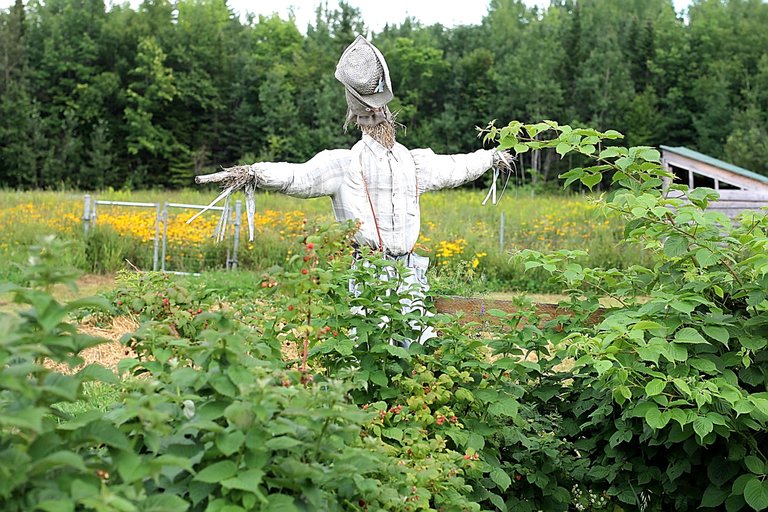
Asparagus
Asparagus are hardy in zones 4-8. I don't have much experience growing them but so far it's been pretty easy. I bought some rooted crowns from the garden centre, planted them in a corner of a raised bed and left them alone. I was amazed to see individual asparagus growing up from the soil. How cool! I left them for too long and they went to seed before we could eat them. This turned out to be a good thing because this is how you go about expanding your seed stock.

Chives
Garden chives are hardy in zones 3-9. With their lovely purple flowers are always a welcome sight in the spring. It will be a while before we have onions from the garden so these greens add a wonderful mild garlic/onion flavour to your meals and the flowers are a fun addition to salads. They are really quite pretty and look beautiful in flower gardens. REad more here: Why You Should Grow Perennial Chives
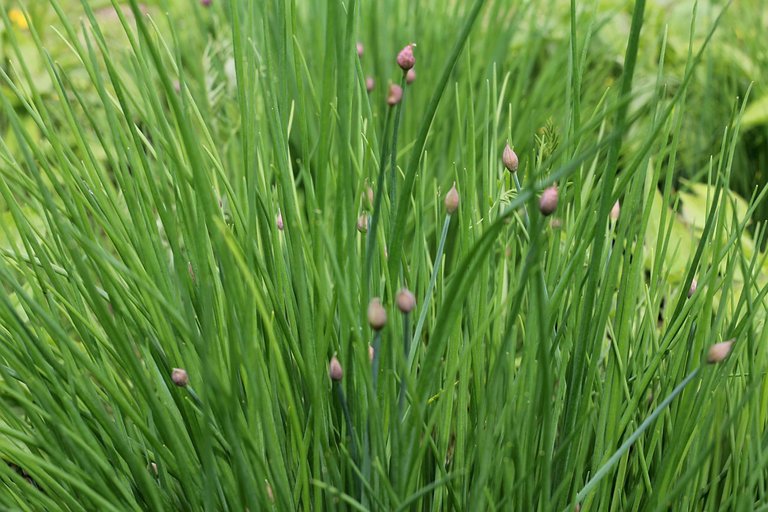
Fruit Trees
Find out what fruit trees grow well in your region and plant as many as you can! We have plenty of wild apple trees that grow around the property but we've planted some of our own as well. We've also planted some cherry trees and would like to add more varieties to the landscape. It can take a while for fruit trees to produce but you are investing in your future food so it's well worth the wait. They also provide shade and other benefits to your garden.

Grapes
Often considered a warm climate crop, some grape varieties are actually hardy to zone 3. Grapes take some patience, they take 3-4 years to start producing fruit. Be sure to select varieties that are suitable for your growing zone. They can provide a nice shaded area in a garden or even a living fence.
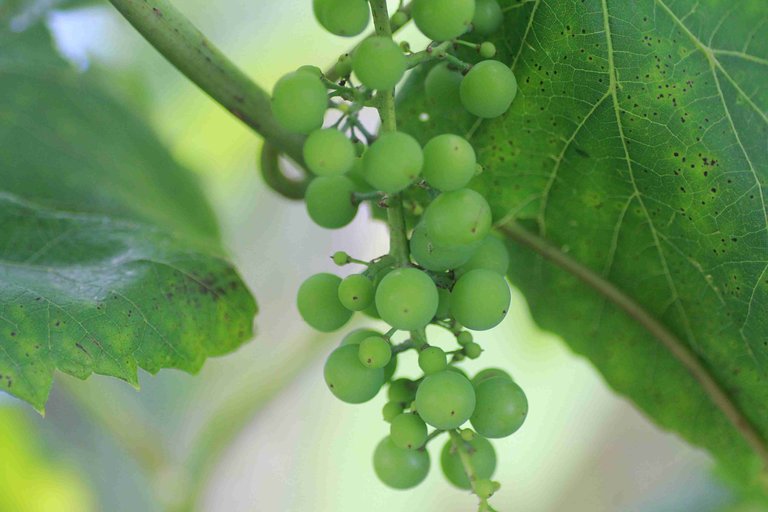
Horseradish
Horseradish is hardy in zone 3-9. Although you can harvest it whenever you want to, we tend to harvest ours in the spring. Some roots will be replanted but the active underground root systems ensure that many new roots will continue to grow. Here is a guide: Horseradish; Harvesting, Planting and Storing
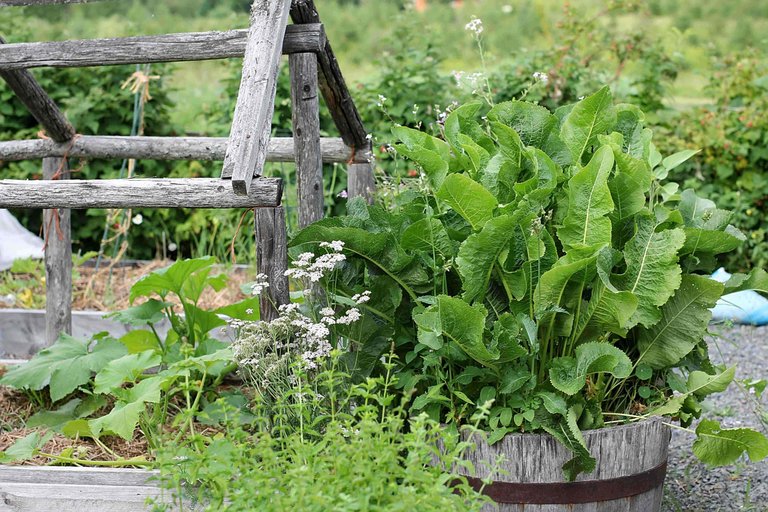
Jerusalem Artichokes
The Jerusalem artichoke is hardy to zone 3. It's a species of sunflower native to eastern North America. It is cultivated for the tuber which is treated as a root vegetable. This perennial vegetable is very easy to grow. Plant the tubers in the early spring and harvest what you need after the first frost or let them overwinter and harvest in the spring. They develop pretty sunflowers in August but unlike all other sunflowers this species does not provide seed/oil. You can read more about them here: Perennial Vegetables: Jerusalem Artichokes
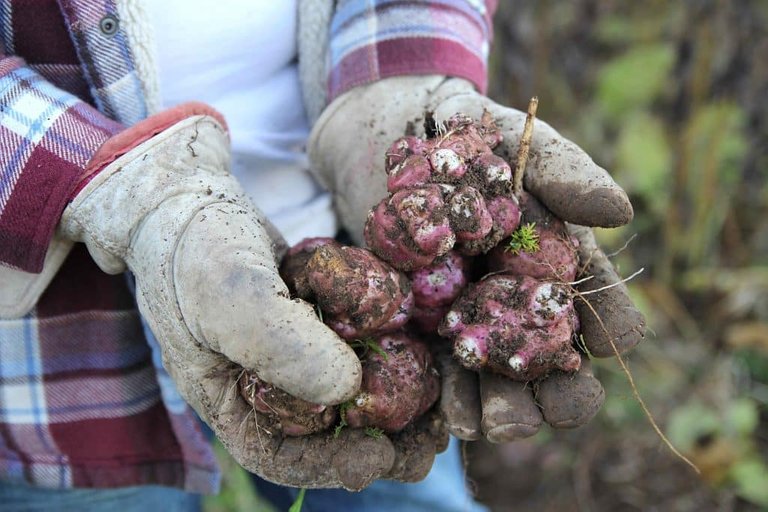
Ostrich Fern (Fiddleheads)
Here in New Brunswick Ostrich Fern's grow wild but you can also plant them. They are hardy to zone 2. They are harvested in early spring for their "fiddleheads". You harvest when the fern leaves are still tightly coiled into a spiral that resembles the top of fiddle. These are sautee'd in butter with salt and better, much like spinach and other cooked greens.
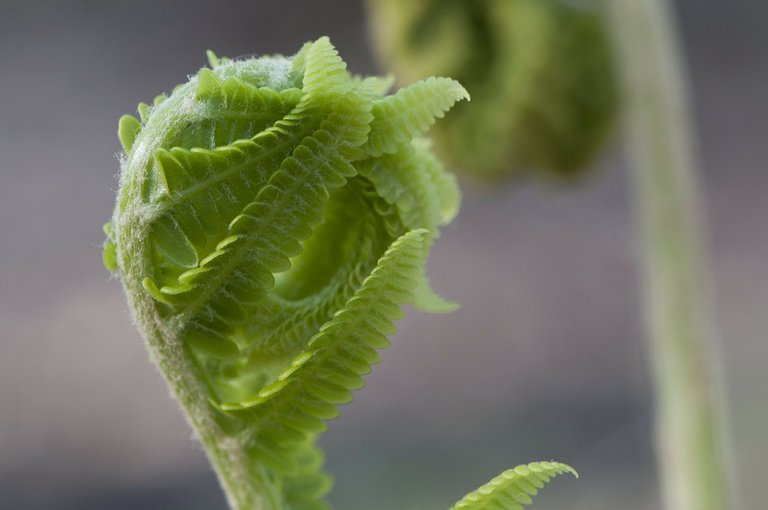
Perennial Herbs
If you live in a cooler climate, with good insulation and protection from the weather you can often trick your herbs to grow in less than optimal climates. It’s worth planting in different areas to experiment. You may find that one location does really well, and another they die off. The herbs that have done best for us include: Mint, oregano, thyme, winter savory, clary sage and lavender.
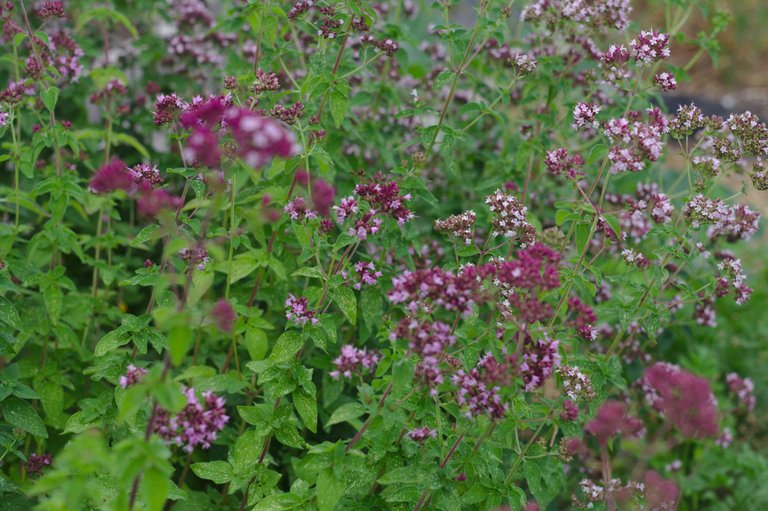
Rhubarb
Rhubarb is a reliable garden perennial. It’s such a diverse plant with many innovative ways to prepare it. Rhubarb can be planted in the early spring or late autumn. Your best bet is to find a relative or neighbour with a rhubarb patch and get them to divide one of their plants for you. Rhubarb: How to Plant, Grow, Harvest and Preserve
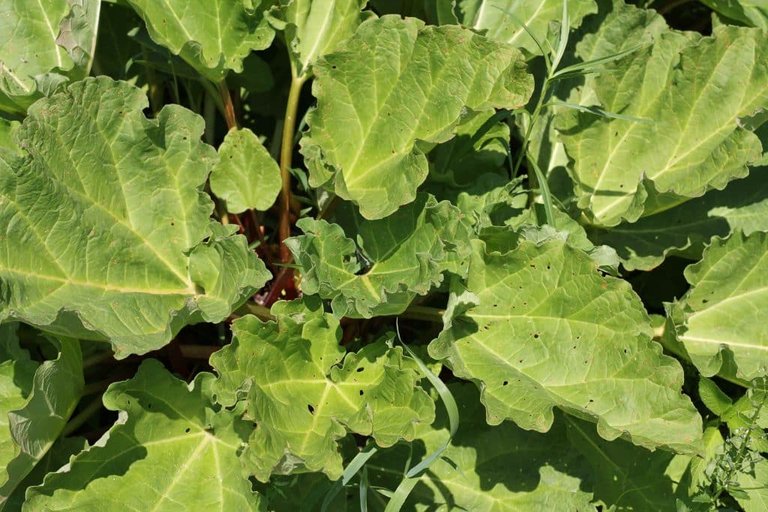
Scarlet Runner Beans
Scarlet runner beans are hardy to zone 4. The entire plant is edible and you can eat the beans dried and fresh. This is a beautiful plant, and in the right conditions a perennial. If you live in a cooler climate, provide shelter/mulch to help the plant survive the winter. We have some that pop up on our greenhouse each year, I composted them not knowing they were perennial.
Strawberries
Many Strawberry plants are hardy to zone 2. In colder climates it's best to cover them with a heavy mulch over winter to protect them. Remove the mulch in the spring so that the sun can warm the soil. It speeds up the growing process a bit. We keep the strawberries in raised beds and cover them with netting to protect the berries from critters.
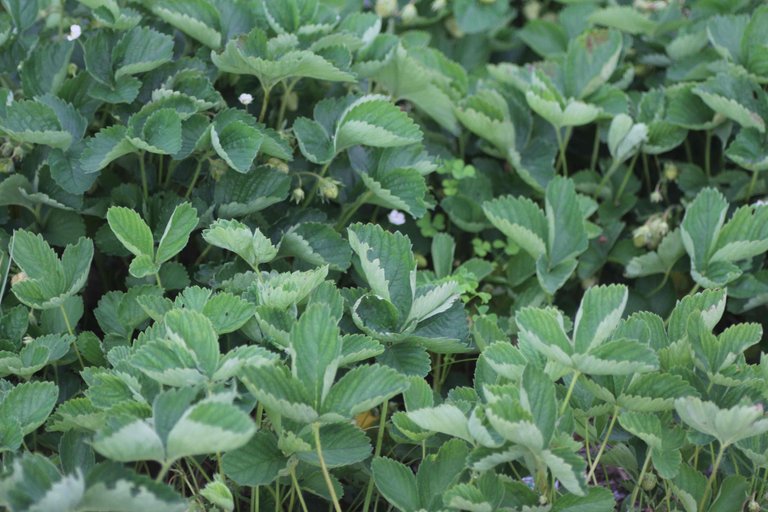
Wild Perennial Food
There are also some less popular edibles that might already be growing on your property such as sorrel, stinging nettle, winter purslane, dandelion along with many others. You can use fireweed, wild roses and clover to make jams, jellies and tea. Discovering how to identify and use local wild edibles is a wonderful way to expand your nutritional landscape. You can find a wonderful list of common wild edibles broken down by growing zones here. Use caution and make sure you know what you are doing before consuming wild edibles.
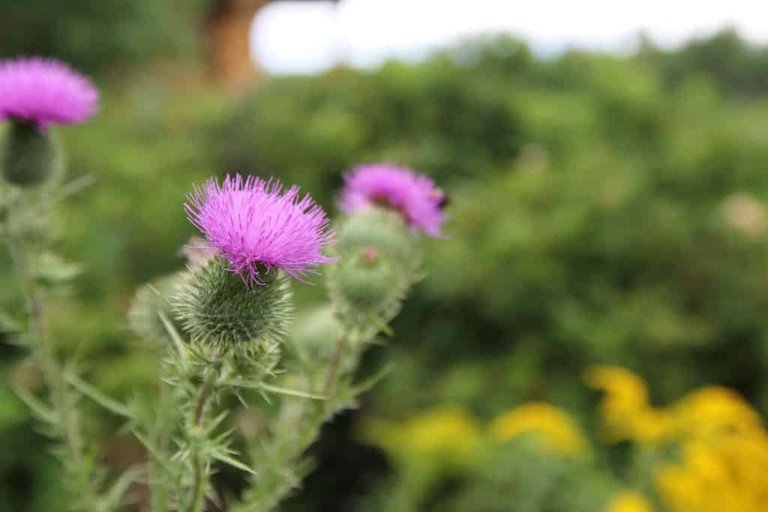
Perennial vegetables are hard to beat when it comes to high production food sources for minimal effort. Spring is an exciting time when you grow perennial food because often they are the first to start growing in the spring. With some extra thought and planning you can get a lot more food from your garden with a lot less work on your part! Just remember to research varieties and select those that are best suited to your specific climate!
Building a greener, more beautiful world one seed at a time.
Homesteading | Gardening | Frugal Living | Preserving Food| From Scratch Cooking|
You can also find me at: walkerland.ca
Photo copyright: @walkerland
Fiddlehead photo: Pixabay

nyc follow me
Thank You, great post.
Ironically I have been for the last few days working on the plans for my gardens. Flowers, herbs and vegetables- then I see your post here and think... WOW! We are on the same wave-length.
We are on the same wave-length. That's very cool!
I have been going through all my notes and photos trying to organize and draw out this years plan (and budget). I like to go through photos to remind myself of what worked, what didn't, what needs to be moved, what I need to buy more of etc. Garden planning is a big job. I just found some lovely close ups of potato bugs at every stage in life. My epic potato growing fail should be a lovely post (haha).
I know! Planning out the garden can be so time consuming,but nothing outweighs the end result with the harvest.
I read so much about which plants/flowers/herbs need direct sunlight, shade and then add in the companion planting part of it and it becomes a job for someone with a college degree.
I do the same thing, and I really do plan it down the the last detail as best I can, but when I get out there my free spirit kicks in and I start planting things all over the place forgetting all my charts and notes. I like to think that some of it just "sticks" and happens anyhow.
A person with OCD would hate my garden. :)
I just started gardening and growing veggies in the last couple years and I absolutely love it. I couldn’t even keep a houseplant alive before. I live in the city so I don’t have very much room to grow things. Gardening has made me consider
moving further out to get more space. I never ever thought I would want to leave the city! I see you grew asparagus, which I always assumed was difficult to grow, might have to try that this year!
Gardening really is addictive. I think part of it is about how it makes us feel. There are studies showing that it reduces stress and makes us "feel good". Have yo looked to see if there is a local community garden you can join?
Asparagus is a new one for me and so I don't have much experience to share, but so far it seems to be growing well without any help from me :)
Happy Gardening!!
Commenting from Minnesota - had no idea grapes could thrive here!
Thanks for all your tips! Perfect timing as I start thinking about expanding my garden for this year!
Just be sure to check with your local gardeners / garden centre to find out what kind grows best. I know some varieties are not cold hardy. You might find this article from the University of Minnesota helpful! https://www.extension.umn.edu/garden/yard-garden/fruit/growing-grapes-for-home-use/
Thanks for the advice and the link! I should've known, the U of M has tips on everything!!!
Thank you for the insight, I live in BC and always find myself wondering if a lot of the wisdom/knowledge/information I find regarding growing plants will be applicable in our climate and shorter growing season. No mystery with this post. Thanks again! (SMOKEBOMB!)
Thanks! I read a lot of articles and wonder the same thing which is why I try to mention growing zone so I am clear on where my info is more useful/practical.
This is so helpful! Now that I own my own home, I'm slowly working towards being self-sufficient in terms of food and utilizing edible landscaping and such. Being in zone 4b it's not exactly the easiest thing to do, and a lot of the resources are geared towards helping warmer climate zones.
It is true that a lot of gardening advice is for warmer climates. I try to list zones because I've followed advice before that was not suitable to where we lived. I am in zone 4b as well ...we've got a bit of a micro climate so I can get away with more but according to the chart that's where we fit :)